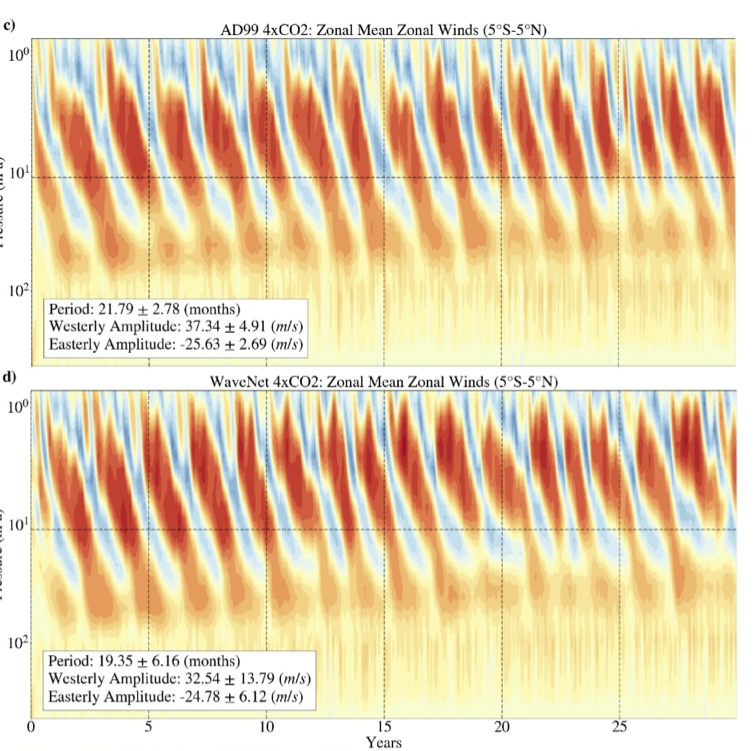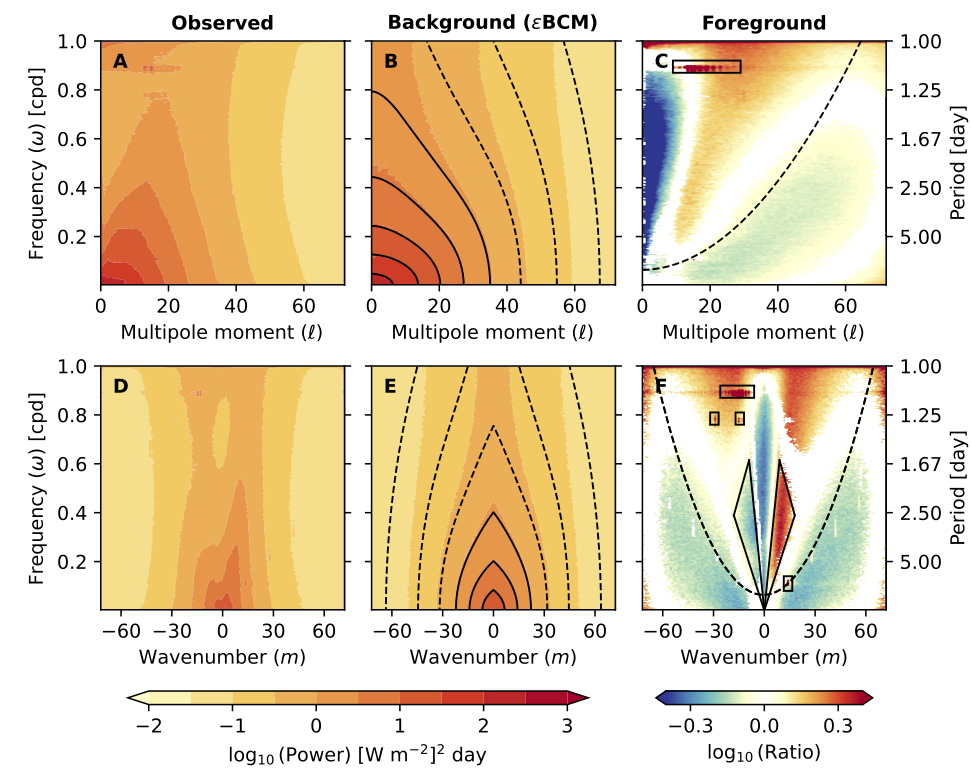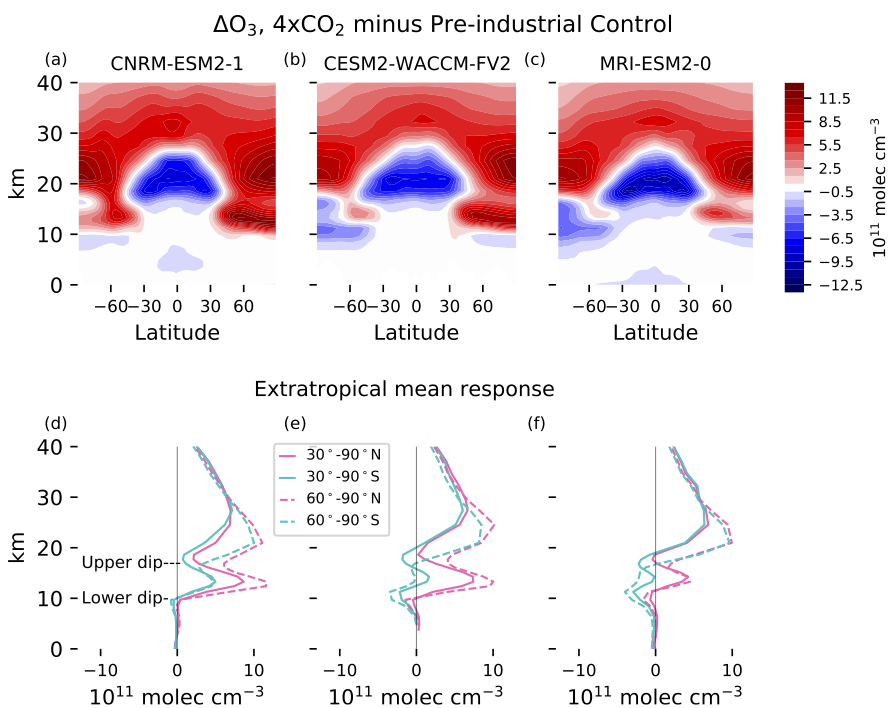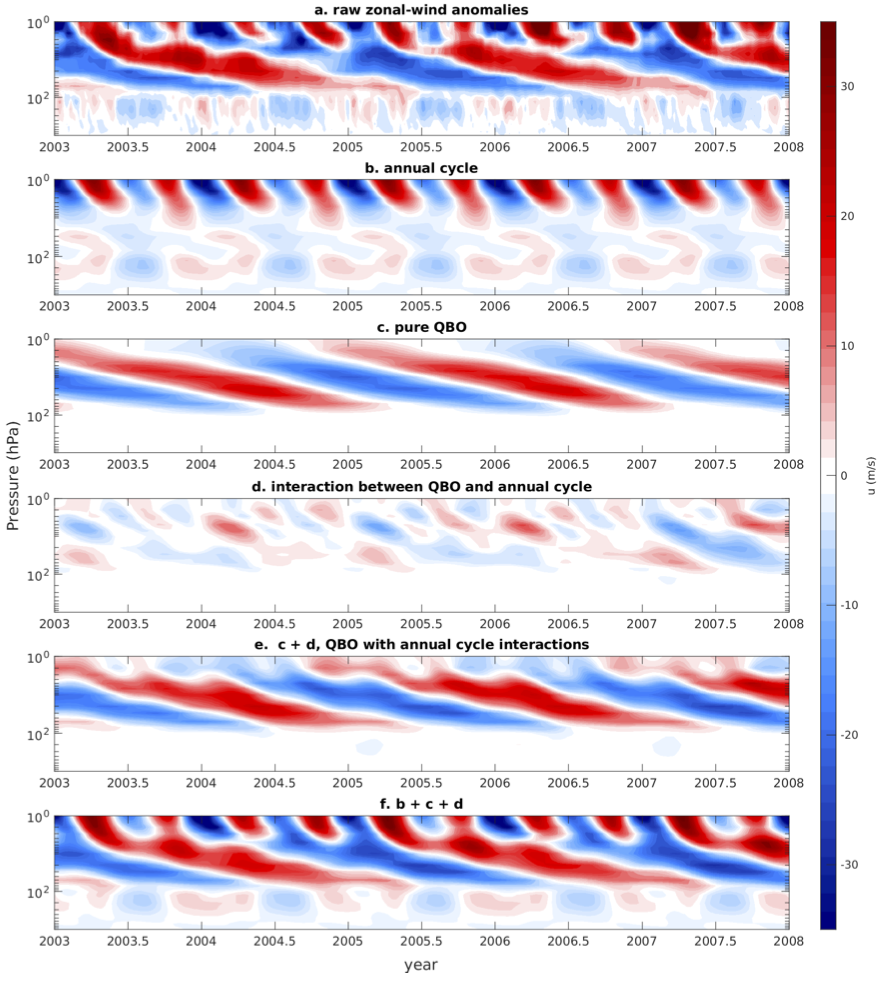Modeling our atmosphere with help from the machines: Revised!
Published:
Following up on our initial submission last January, we’ve just resubmitted our paper on using machine learning to represent un(der)resolved gravity waves in atmospheric models.

What’s new? We’ve coupled the neural network based parameterization to the atmospheric model, and probed it’s ability to capture the response of the original gravity wave parameterization to global warming! As you can see in the picture above, the neural network captures the weakening of the QBO and the reduction of its period, as simulated by the original physics based parameterization. The weakening of the QBO in response to enhanced greenhouse gas forcing is observed across all models, and appears to be happening already in our atmosphere. The change in its period, however, is not robust across models and hence remains an open question. Our ultimate goal is to build machine learning based parameterizations constrained by data, so we can say something more definitive about the response of the QBO (and the atmosphere more generally) to global warming.
For the details, please see the paper: A Deep Learning Parameterization of Gravity Wave Drag Coupled to an Atmospheric Global Climate Model, just revised for Geophysical Research Letters. It was led by Zachary Espinosa, a graduate student working with Aditi Sheshadri at Stanford University, in collaboration with Gerald Cain and Kevin DallaSanta.




